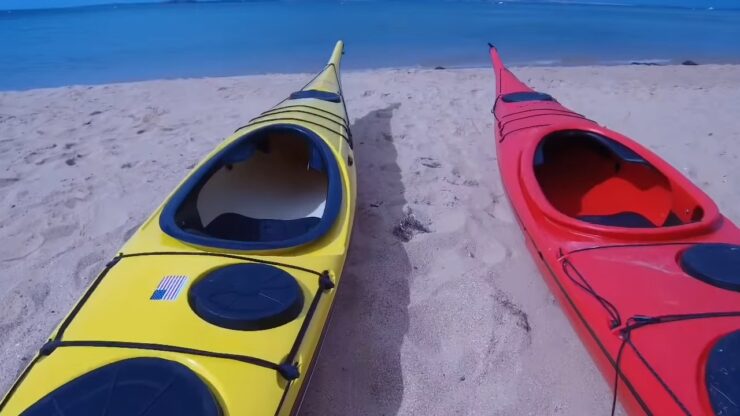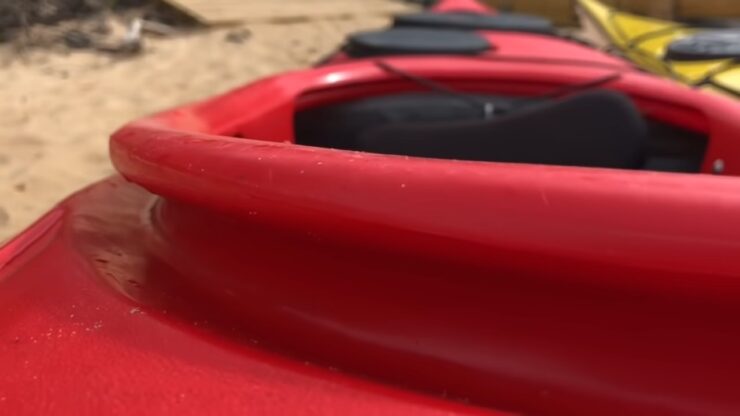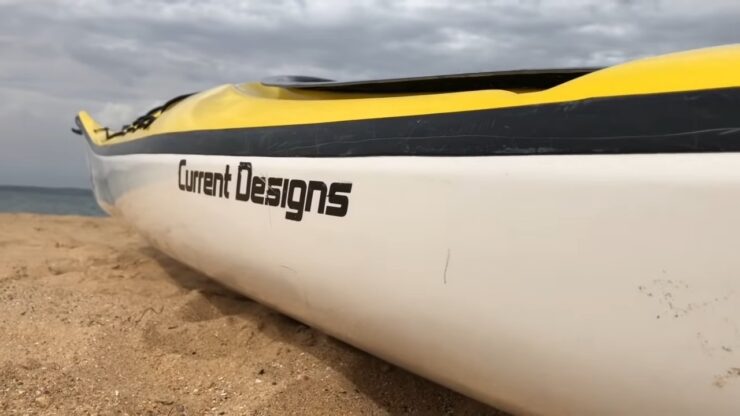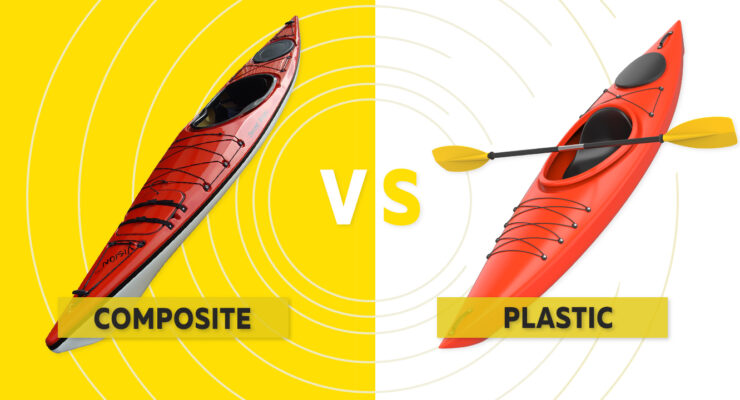When you buy a new kayak, the first decision that you will have to make is between plastic or composite material. This article will compare these two materials, as well as discuss the benefits of each one. In addition, this article will help you choose which type of material would be appropriate for your needs and budget.
Table of Contents
ToggleWhat are composite and what are plastic kayaks?
The first thing that we need to do is define what plastic and composite kayaks are made out of by going over their defining qualities.
Plastic kayaks are typically more affordable than composite ones because they use lower-grade plastic in their construction—this means that they cost less for companies to make but also means that they may not be as durable or impact-resistant as composite kayaks.
Composite kayaks are made out of materials that are much lighter than plastic ones, which means that they are more expensive but also have a lower total weight.
When you look at the two materials, you need to remember that plastic kayaks will be heavier, while composite kayaks will be lighter. This means that it may be harder for you to get your plastic kayak up onto your vehicle’s roof rack or into storage after use.
It is easier for you to get your composite kayak moving without needing to move it around too much because its weight won’t make things any harder for you. You can expect your composite kayak to be more durable than your plastic kayak because it is made out of materials that are stronger.
Composite kayaks will also have a bit more give in them as well, which means that you will have a good bit more control over how your boat moves because the kayak won’t impact the water as much as a stiffer one would.
While some plastic kayaks can be comparable in price with comparative composites, it is important to understand that the very least expensive plastic boats frequently do not compare favorably with mid-level or higher composite boats.
Plastic hulls can tear more easily than composite ones, but they also weigh less for a given size boat. They are generally less expensive for their size and have a variety of color choices available. It is acceptable for paddlers wanting to paddle on calm lakes or slow rivers.
They can handle white water and surf waves. However, they require more time and money to maintain than composites.
Prices of composite and plastic kayaks

Their price depends on the quality of plastic used in its construction and other materials that are added during the manufacturing process. The cost can range from $1,000 to over $2,500 per boat. Compared with a 12′ kayak which is around $600 this is expensive!!
Composite kayaks are made out of layers of fiberglass fabric soaked in resin, resulting in a hull that is lightweight but also strong for its weight. Composite kayaks have high abrasion resistance compared to plastic boats providing superior durability, especially under challenging conditions such as rocky beaches or shallow water situations where sharp objects may be present. They are considered high-performance boats.
Composite kayaks are typically faster and more responsive than plastic boats. Composite kayaks can edge with ease and hold their line through a corner or down the river making them ideal for flatwater touring and solo open water paddling.
However, because of the materials, they’re made from, composite kayaks are generally considered less durable than their plastic counterparts. Their price ranges from $800 to $1,700 per boat depending on the quality of the material used during its construction.
Overall this comes down to personal preference as each offers advantages over the other but one thing for sure…If you got it like that then you got it!!
Plastic kayaks are more affordable than composite kayaks. They are easier to find and purchase, as they are the most widely used material for kayak construction (especially recreational models).
Plastic Kayaks

Advantages:
- Plastic kayaks are more affordable than composite kayaks.
- They are easier to find and purchase, as they are the most widely used material of kayak construction (especially recreational models).
- Plastic is a very durable material, which means that it can handle adverse weather conditions such as rain and sun better than other materials used for boat manufacture.
Disadvantages:
- The smoothness of plastic makes these boats slower in comparison to their fiberglass counterparts. Another side effect of this relative slowness is increased water resistance, resulting in a longer time needed to cover relatively short distances.
- This same lack of speed also renders them less efficient paddling on flat water when compared to other materials.
Composite Kayaks

Composite kayaks are reinforced with fiberglass, this process makes them stronger and lighter than plastic kayaks. This factor allows for easier carrying and transportation of the craft. The combination of strength, lightweight, low cost, and easy portability make these boats great for novice users or those looking to take a quick excursion in a recreational model.
However, they lack the durability that plastic can provide against harsh weather conditions such as rain and sun exposure.
Advantages:
- Composite kayaks are reinforced with fiberglass, which makes them stronger and lighter than plastic kayaks
- This allows them to be easily carried by one person when on land
- The combination of strength, lightweight, low cost, and easy portability make these boats great for novice users or those looking to take a quick excursion in a recreational model.
Disadvantages:
- Fiberglass provides less protection from the sun and other environmental hazards because it is not as smooth as plastic
- Composite kayaks are more expensive than their fiberglass counterparts. This can be attributed to the additional strengthening material used during construction that adds to the cost of the end product. Their relatively high costs may also result from a difficult production process compared to plastic models.
Conclusion
Plastic Kayaks are cheaper and have easier access which makes them a better choice for beginner boaters who will most likely use them in calm waters conditions.
Composite kayaks are more level in paddling due to their fiberglass construction which makes them perfect for long distances.
Adelaide Gentry, a seasoned kayaking enthusiast and expert, is the driving force behind KayakPaddling.net. With over a decade of experience navigating the world’s most challenging waterways, Adelaide combines her passion for adventure with a deep knowledge of kayaking to provide insightful and practical guidance for paddlers of all levels.
Related Posts:
- 16 Best Kayak For Beginners 2025 - Kayaking Adventure Gear
- 10 Best Inflatable Kayak 2025 - Rivers, Lakes & Open Seas
- 10 Best Fish Finders Under $200 2025 - Top Affordable Picks
- 10 Best Kayaks For Camping 2025 - Lightweight and…
- Canoe vs. Kayak: Differences and Benefits You Need to Know
- 12 Best Motorized Kayak 2025 - Start Your Aquatic Adventure!












